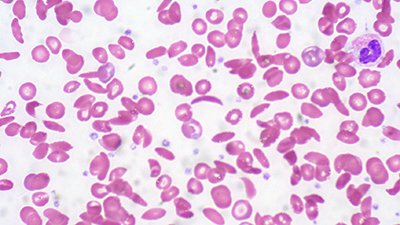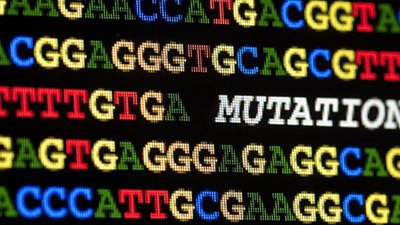The Ancient Mega-Clone
Models suggest massive Mediterranean meadows are millenary mega-clones.
News Source
The record for “oldest living organism” may be passing to a Mediterranean seagrass, Posidonia oceanica. An international team led by the University of Western Australia’s Ocean’s Institute has sampled seagrass growing in 40 undersea meadows from Spain to Cyprus and found clonal relationships stretching over kilometers. Computer modeling was used to calculate the time required to achieve cloned spans up to 15 kilometers across. Results suggest between 12,500 and 200,000 years1 would be needed for the slow-growing seagrass to achieve this size. Classifying each massive collection of clones as an organism, the researchers consider them the oldest living organisms on earth.
Like all seagrasses, P. oceanica is able to reproduce both sexually and asexually, but clonal reproduction is the dominant method. UWA professor Carlos Duarte believes the great age and size are a result of its clonal propagation method. He says, “Clonal organisms have an extraordinary capacity to transmit only ‘highly competent’ genomes, through generations, with potentially no end.” He adds, “Understanding why those particular genomes have been so adaptable to a broad range of environmental conditions for so long is the key to some interesting future research.”
Several points in these age estimates seem puzzling. “Given the slow growth rate of P. oceanica, clones that extend over kilometres may be expected to have accumulated somatic mutations, although none were detected.”2 And seagrass adaptability evidently includes the ability to survive being beached. Since one pair of clone-matched meadows was found 7 kilometers apart on opposite sides of an island and another 15 kilometers apart around a cape, the drop in sea level during the Ice Age would have placed those sampling locations on land.3
Since the samples did not contain detectable mutations, the researchers assume their model is accurate.
The computer model used to calculate seagrass age is based, the researchers explain,4 on the assumption of a vanishingly low mutation rate and an unchanging slow growth rate. Since the samples did not contain detectable mutations, the researchers assume their model is accurate. This reasoning is circular. The researchers also do not know how the seagrass manages to mobilize itself over such great distances. Purely clonal growth seems unlikely, they note, given the aforementioned drop in sea level. Other possibilities involve fragmentation with dispersal of shoots and later reattachment.5 The mechanics of its propagation, however, affect the estimates.
Furthermore, changing conditions may have drastically altered the growth rate or the mechanics of propagation over the clonal history. For instance, given the warm water conditions and even the differing mineral content that would have prevailed during and after the tumultuous year of the global Flood, these seagrasses may have grown at a substantially different rate for some time after the Flood. Since the computer model is based on speculative uniformitarian assumptions about growth rate, conditions, propagation mechanics, and mutation rate, the enormous—and biblically impossible—ages are not reliable. The turmoil of the global Flood around 4,300 years ago would have certainly uprooted the original seagrass, so the massive clonal organisms sampled in the Mediterranean represent colonies that have replanted and grown since that time.
Further Reading
For More Information: Get Answers
Remember, if you see a news story that might merit some attention, let us know about it! (Note: if the story originates from the Associated Press, FOX News, MSNBC, the New York Times, or another major national media outlet, we will most likely have already heard about it.) And thanks to all of our readers who have submitted great news tips to us. If you didn’t catch all the latest News to Know, why not take a look to see what you’ve missed?
(Please note that links will take you directly to the source. Answers in Genesis is not responsible for content on the websites to which we refer. For more information, please see our Privacy Policy.)
Footnotes
- Sophie Arnaud-Haond et al., “Implications of Extreme Life Span in Clonal Organisms: Millenary Clones in Meadows of the Threatened Seagrass Posidonia oceanica,” PLOS One February 1, 2012, doi: 10.1371/journal.pone.0030454
- Ibid.
- Ibid.
- Ibid.
- Ibid.

Answers in Genesis is an apologetics ministry, dedicated to helping Christians defend their faith and proclaim the good news of Jesus Christ.
- Customer Service 800.778.3390
- Available Monday–Friday | 9 AM–5 PM ET
- © 2026 Answers in Genesis




